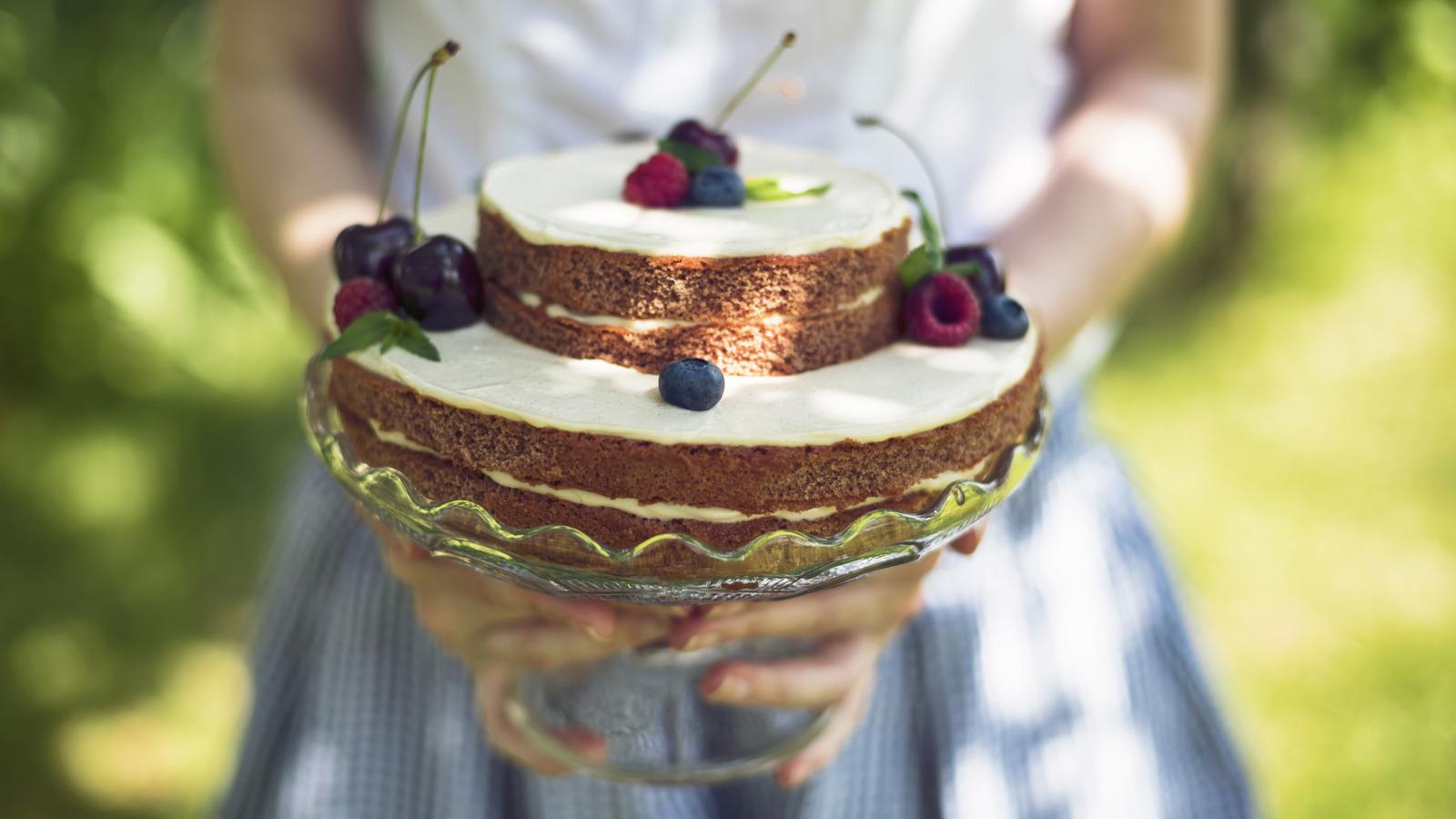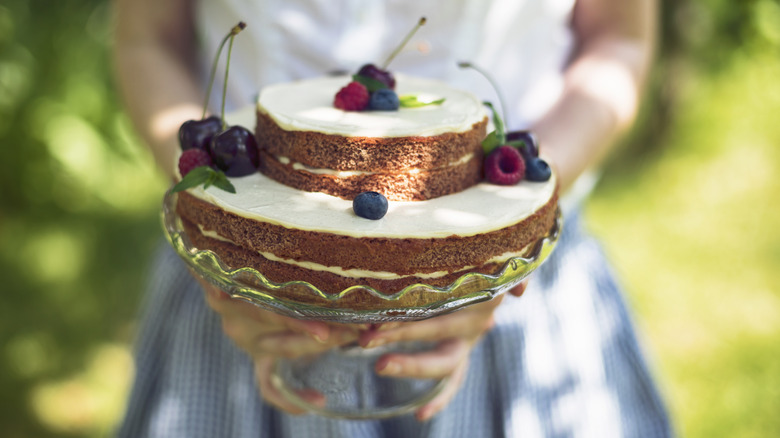
Portishead1/Getty Images
I'm a food writer, which means I love a boundary-pushing dessert as much as the next person — a little more, perhaps. But when I close my eyes and picture the perfect dessert, I don't see a deconstructed plum cobbler with a cardamom foam. I see the kind of classic cake that my grandma kept in an old-school tin on her kitchen counter. Many of these vintage cakes are still popular today, and not just for the sake of nostalgia, but because they're tasty enough to have survived changing food trends.
Why do these vintage recipes, some of which are over a century old, continue to dominate our dessert tables and Instagram feeds? Because they're the thing of pure, unfussy deliciousness. Unlike fleeting dessert trends, these cakes have proven their worth through wars, economic booms and busts, and countless changes in culinary fashion. They stick around because they're timelessly tasty. Whether you want to bake a crowd-pleasing dessert or you're just interested in food history, these old-school cakes are still hits today.
Victoria sponge cake
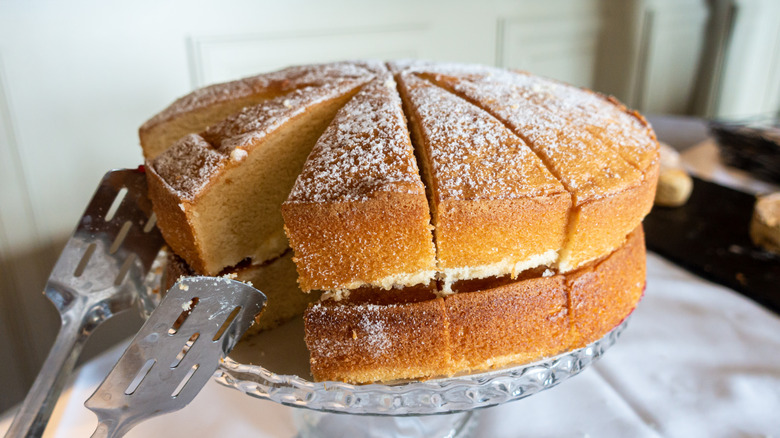
Matthew Ashmore/Shutterstock
If you're looking for a cake that embodies British elegance without frills, you've found it. The Victoria sponge is deceptively simple: two layers of vanilla sponge cake separated by a generous spread of raspberry or strawberry jam, and either vanilla buttercream or fresh whipped cream. That's it. It's the cake equivalent of a perfect white T-shirt — effortless, versatile, and always a good choice.
But don't let the simplicity fool you. This cake has serious royal provenance. It was named after Queen Victoria, who was apparently a huge fan of a slice with her afternoon tea. While the history of sponge cakes dates back much further, it wasn't until the Victorian Era and the invention of baking soda that it really became a hit.
The cake's original incarnation was actually known as the Victoria sandwich, and it was the perfect vessel for the newly accessible baking soda and refined flour of the industrial revolution. This made cakes easier to get light and fluffy, without spending hours whipping egg whites as a leavening agent — something few home cooks had time for. Our easy Victoria sponge cake recipe is perfect even for novice bakers. And, if you want to level things up, homemade jam can really elevate this type of cake.
Pound cake
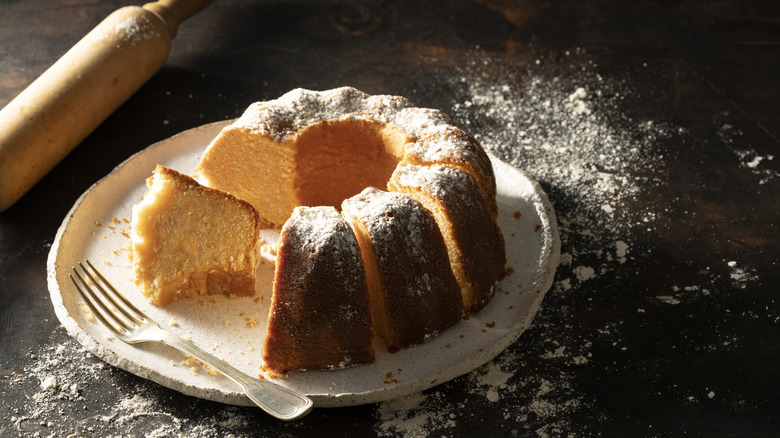
Mediterranean/Getty Images
For many folks who baked at home with parents or grandparents, their first real baking memory is of a pound cake. Not a fancy, frosted creation, but just a simple wholesome loaf cake. It's so simple, but that unmistakable aroma of butter, sugar, and vanilla is pure comfort. In a world of elaborate bakes, a basic pound cake recipe is unfussy in the most fantastic way.
The pound cake gets its name from its original recipe, a straightforward formula from the 1700s that was easy to remember: a pound of flour, a pound of butter, a pound of sugar, and a pound of eggs. Though people have made tweaks to their own versions of the recipe over the years, the classic is still as good today as it was back then. It's dense, rich, and moist, with a tight, buttery crumb and a perfectly browned crust.
So why is this centuries-old cake still a go-to? Because it's one the most versatile cakes in the baker's arsenal. It's the perfect blank canvas. You can serve a slice on its own with a cup of tea, top it with fresh berries and whipped cream for an elegant dessert, or slather it in a tangy lemon glaze. You can even toast thick slices and serve them with butter for breakfast, like banana bread. While some modern recipes have additions like sour cream or lemon zest for a lighter texture and brighter flavor, or chocolate frosting for richness, the essence of the cake remains.
Red velvet cake
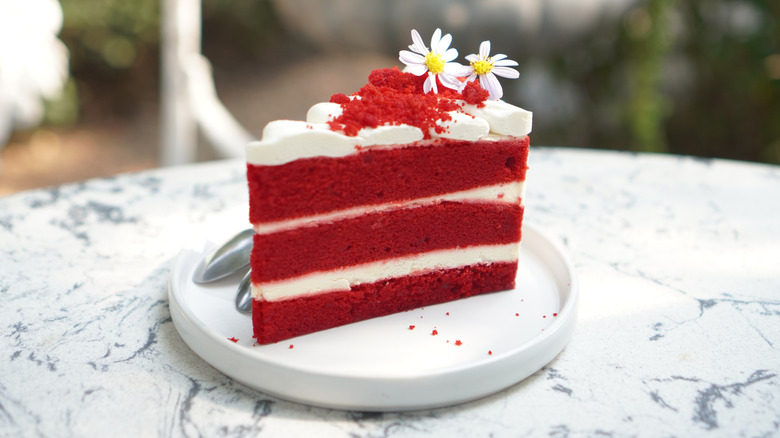
Penpak Ngamsathain/Getty Images
With a rich red sponge and a creamy off-white frosting, red velvet cake is certainly striking. But what exactly is it? A classic red velvet includes a touch of cocoa powder, buttermilk, and occasionally vinegar. The acids react with the anthocyanins in natural cocoa powder to create a subtle reddish-brown hue and an incredibly soft, fine crumb — hence the "velvet" part of the name. Today, red food coloring gives it that iconic, dramatic look, but it's just as popular as ever.
Its history is a bit hazy, with the Waldorf-Astoria in New York and the Adams Extract company, among others, claiming it as their own. However, it's more likely a gradual invention, rather than the product of one person's genius. It's been around since at least the early 1900s, when the first recipes pop up that mention intentionally pursuing a red color by either fermenting the batter overnight or using the right mixture of ingredients to get a reaction to occur. However, before this, it was likely that people making regular chocolate cakes gradually stumbled upon the fact that using certain methods or ingredients resulted in a reddish hue.
Red velvet cake recipes aren't all that different today. This classic is still a red chocolate cake, although many versions call for using red food dye to achieve the color. Today, it's almost always paired with cream cheese frosting. The tang of the frosting cuts through the cake's sweetness, balancing it out.
Black Forest cake
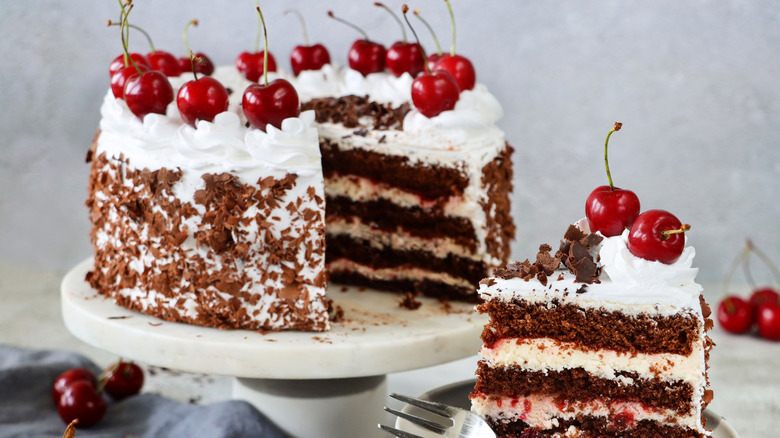
Mtreasure/Getty Images
Even though it's not at the height of its sophistication, Black Forest cake is still an impressive and much-loved dessert. Known in its native Germany as Schwarzwälder Kirschtorte, this tower of chocolate, cream, and cherries is retro, sure, but in a cool way. It's built from several layers of rich, dark chocolate sponge cake, which are brushed generously with Kirsch, a clear cherry brandy that gives the cake its signature boozy warmth. Sandwiched between these layers is whipped cream and tart sour cherries. It's then coated in more cream and decorated with chocolate shavings and cherries.
Many people think the cake got its name because it originated in the Black Forest region of Germany. However, this may not be the case. Some historians say it was named after the black, white, and red traditional dress worn by women from the region. It's widely believed that Josef Keller of Cafe Schaefer invented the Black Forest cake in 1915, though some dispute this.
Whatever its origins, the cake's popularity exploded in the mid-20th century, and though it's not quite the sophisticated showstopper it was in the 1970s, you'll still find it in cafes and on dessert menus across the world. It's a classic for a reason. You get the richness and slight bitterness of the chocolate, the lightness of the cream, the sharp tang from the cherries, and that distinct alcoholic kick from the Kirsch.
Lemon drizzle cake
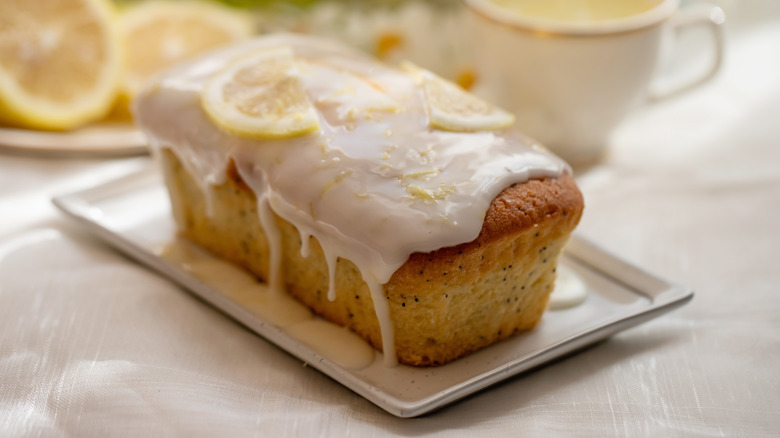
Arisara_tongdonnoi/Getty Images
When you're a kid, you want the cake that's piled high with super sweet chocolate and covered with elaborate decorations. But, as you get older, you likely appreciate the simple things — like a classic lemon drizzle cake. It's the perfect balance of sweet and tangy, and simple enough for a weekday, treat but special enough to serve to guests.
This is a straightforward lemon-infused sponge cake, but its genius lies in a two-step finish. First, while the cake is still warm from the oven, it gets drenched in a tart lemon syrup that soaks deep into the crumb, making it incredibly moist and intensely flavorful. Once cool, it's topped with a simple, crunchy powdered sugar-and-lemon-juice glaze. This contrast between the moist cake and its crisp, crackly topping is what makes it so irresistible.
Though it feels like it should have been around forever, it only dates back to the second half of the 20th century. One recipe by Evelyn Rose was published in "The Jewish Chronicle" in 1967, and it took off from there. However, it likely developed from a much older practice of adding lemon to pound cake. Lemon drizzle is bright and refreshing, so it never feels too heavy compared to other cakes. This is likely part of what has made it an enduring favorite.
Angel food cake
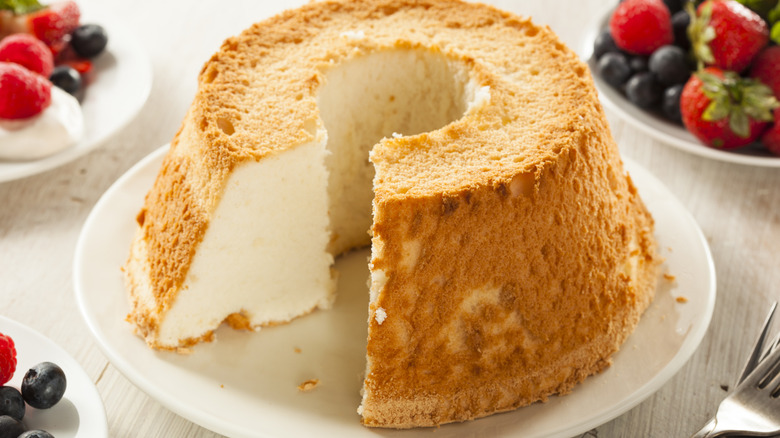
Bhofack2/Getty Images
Some cakes are dense and rich, but angel food cake is the complete opposite. It's famous for being incredibly light, airy, and brilliantly white. Its crumb is light and pillowy, a texture that comes from the whipped egg whites that are used for leavening.
You might be surprised to learn there's no butter, oil, or egg yolks in angel food cake. Instead, it gets all its structure from egg whites beaten into a stiff meringue with sugar. Flour is gently folded in to create a delicate batter. It's always baked in a tube pan, which helps the fragile cake hold its shape as it bakes and cools.
Angel food cake is a classic American invention from the 1800s. Its rise in popularity is often linked to the invention of the hand-crank egg beater, which made whipping a dozen egg whites much less of a chore. It continues to be a favorite today, because there's nothing quite like the texture you get from a cake leavened this way. Want to try it for yourself? Give our foolproof angel food cake recipe a whirl.
German chocolate cake
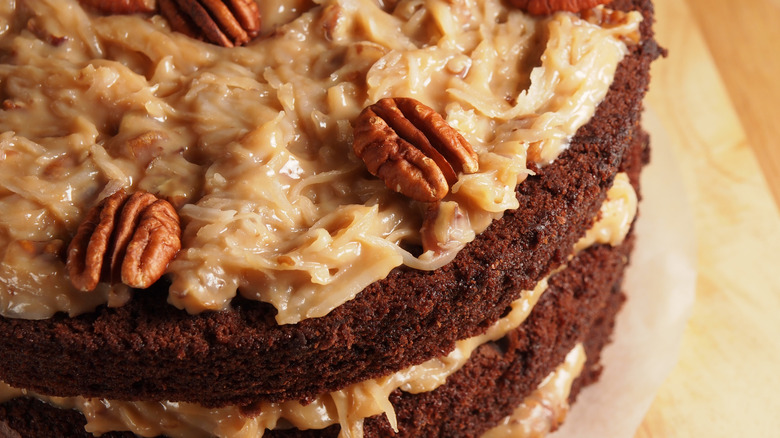
Chalermsak/Shutterstock
Despite its name, German chocolate cake has nothing to do with Germany — it's a purely American creation. The name is a reference to Samuel German back in 1852, who didn't invent the cake, but does have a little something to do with it. German was a baker who created a type of baking chocolate for the Baker's Chocolate Company. It had a higher sugar content than the usual version and was named German's Sweet Chocolate. Now, fast-forward a century to 1957, when a recipe using this chocolate was published in a Dallas newspaper and became a nationwide hit. The recipe writer called it German's chocolate cake — and the rest is history.
The cake is traditionally made with German's Sweet Chocolate, giving them a lighter color and flavor than cakes made with cocoa powder or dark chocolate. However, contemporary German chocolate cake recipes often use whatever chocolate is on hand. But the topping is what really sets it apart from other chocolate cakes. It's covered in a gooey, caramel-like frosting made from evaporated milk, then loaded with shredded coconut and chopped pecans. It might not be as popular as it was in its heyday, but it's still a firm favorite with many, and we don't expect it to go away any time soon.
Opera cake
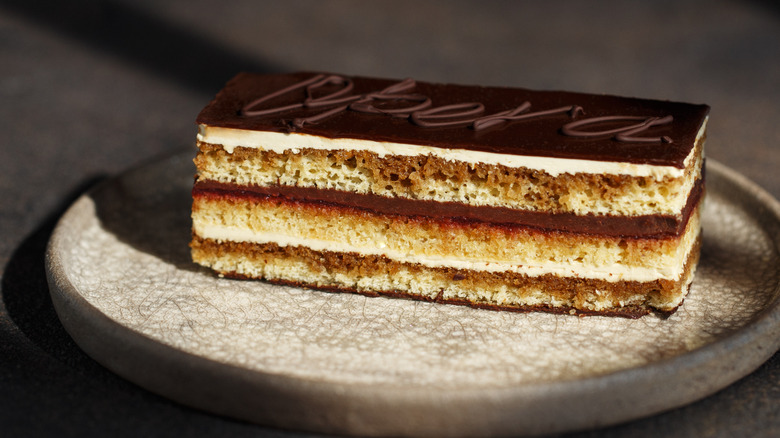
Oksana Osypenko/Getty Images
Opera cake is a French classic. This vintage cake is the height of patisserie elegance to this day. It's a neat, rectangular bake composed of thin, perfectly-even layers. It's a sophisticated, grown-up dessert that's impressively precise and equally delicious. Despite having been around since at least the mid-1900s, it's still considered stylish and sophisticated.
It's made using almond sponge cake, known as a joconde, soaked in a potent coffee syrup. This sponge is then layered with alternating stripes of coffee-flavored buttercream and a rich, dark chocolate ganache. The entire cake is topped with a final, glossy layer of chocolate glaze, which is traditionally inscribed with the word "Opéra."
While the history may be older, the cake was popularized in the 1950s by the famed French patisserie, Dalloyau. The name is said to be a tribute to the Paris Opéra House, as the neat layers are reminiscent of the tiered seating. It remains a fixture in high-end bakeries, likely because of its classic flavor combination and restrained elegance.
Swiss roll
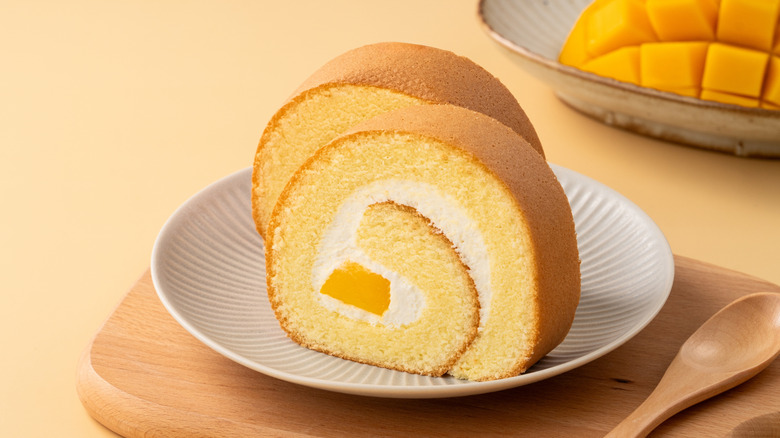
Romix Image/Shutterstock
If you aren't at least a little charmed by the perfect spiral of a Swiss roll, you need to have a word with yourself. For many, it brings back memories of pre-packaged lunchbox treats, but there's so much more to this iconic cake. It's a rolled sponge that's simple in theory, but can be a challenge to get right. The trick is creating a sponge that's light and flexible enough to be rolled without cracking.
The cake consists of a thin sheet of sponge baked quickly in a shallow pan. While still warm and pliable, it's rolled up to cool, which helps minimize the chance of cracking. Once cool, it's spread with a filling and then rolled up again into a log. Jam or jelly is perhaps the most common filling, but there are so many options: custard, buttercream, whipped cream, ganache.
Despite the name, the Swiss roll doesn't come from Switzerland. Its origins likely trace back to 19th-century Central Europe. It became hugely popular in Britain and the United States, where it was often called a "jelly roll." It's still a favorite, because it's so adaptable and can be used to make iconic desserts like Yule logs. It can be hard to master, but once you've got it down, it's a gorgeous centerpiece.
Boston cream pie
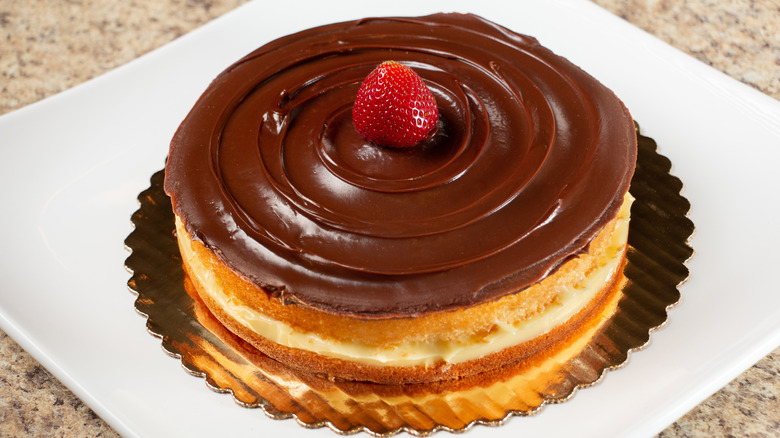
Patrick Yeagle/Shutterstock
First, let's address the elephant in the room: Boston cream pie is not a pie, it's a cake. This misnamed dessert is a beloved American classic. It's a perfect example of a dessert where the whole is much greater than the sum of its simple parts.
A Boston cream pie features two layers of a sponge cake — often a pound cake or similar. Sandwiched between them is a thick layer of creamy vanilla custard. The dessert is then topped with a chocolate glaze or ganache that is poured over the top and drips down the sides. It's a simple, but unbeatable, trio of vanilla, custard, and chocolate.
There's some mystery to the origins of the Boston cream pie. It's been on the menu of Boston's Parker House Hotel since it opened in 1855, though it's not exactly clear whether it was invented by a chef there or was a cake that was already popular in the area. So, why the confusing name? In the 19th century, the lines between cakes and pies were blurry, and cakes were commonly baked in pie tins.
The original Parker House recipe is still served at the hotel, which is now the Omni Parker House. The dessert has endured over 150 years, in part because its flavor combination is widely loved. Vanilla and chocolate go brilliantly together — and who doesn't want a thick layer of custard in their cake?
Devil's food cake
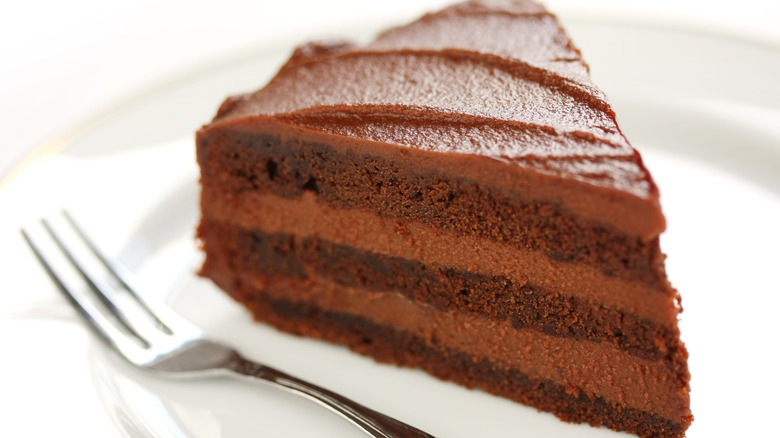
Bonchan/Getty Images
Devil's food cake is a chocolate cake, known for its rich, deep flavor and its signature, dark red-brown hue. The "devilish" color comes down to a specific chemical reaction that produces a tender, incredibly moist texture and a signature reddish-brown color.
This is similar to red velvet cake, but not identical. For one, devil's food cake uses Dutch processed cocoa for a richer chocolate flavor (this results in a less pronounced red color). It also uses different wet ingredients, such as coffee in place of the buttermilk in red velvet cake. What's more, devil's food cake can have cream cheese frosting, but it's not a given. It may have chocolate buttercream, ermine frosting, a ganache topping, or other variations.
Devil's food cake was an edgy 19th century response to angel food cake. It was the dark, decadent counterpoint to this popular white cake. Its enduring appeal lies in its reliable richness and depth, and it's the definitive choice for those who desire a chocolate cake that is dark, deep, and decadent.
Hummingbird cake
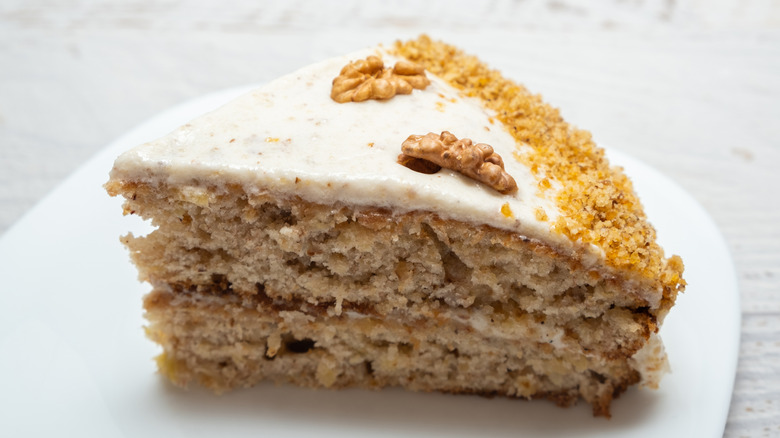
Bojan Pavlukovic/Shutterstock
Hummingbird cake is a vintage find that's still a hit today. It is a moist, spiced cake that incorporates a hearty mix of crushed pineapple, mashed banana, and crunchy pecans into the batter. It's finished off with a layer of cream cheese frosting, with a tanginess that cuts through the richness of the cake, balancing the heavy fruit and spice notes.
It's often considered a Southern classic, because it gained nationwide fame in the United States after a recipe was published in Southern Living magazine in 1978. However, its origins can be traced back to Jamaica in the 1960s. After having gained its independence from Britain, the island nation was looking for ways to bring new wealth to its shores — and it decided to encourage tourism. The cake was invented to show off the produce of Jamaica and the recipe disseminated to publications worldwide. Any hummingbird cake recipe around today has its roots in the original version. Packed with tropical fruits and sweet spices, it's no surprise that it was a hit back then and continues to be popular today.
Chiffon cake
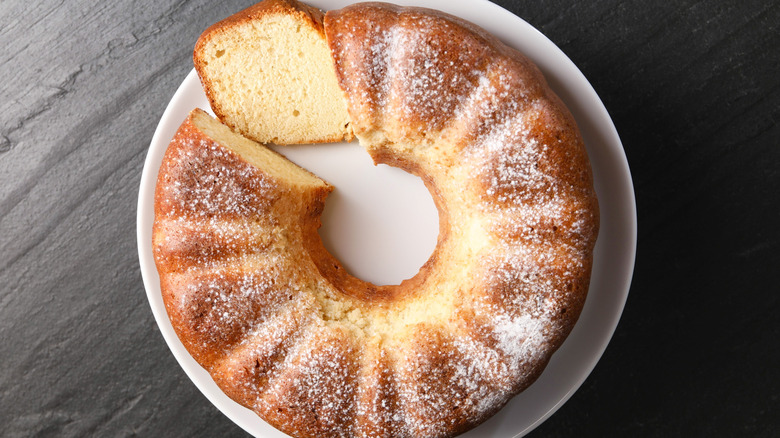
New Africa/Shutterstock
When it was invented back in the 1920s, the chiffon cake was lauded as a new kind of cake. Before that, you had butter cakes, which were rich and moist, but with a more dense crumb. Or you had those leavened with egg whites, like angel food cake, which had a lightness to them, but weren't as rich, because of the lack of fat in the recipe. The chiffon cake, however, managed to be light and rich at the same time.
Like angel food cake, the chiffon relies heavily on stiffly beaten egg whites for its lift, which results in its characteristic delicate, open, and super-soft crumb. However, the addition of vegetable oil — which was a fairly new ingredient at the time it was invented — means that the crumb is far more moist and rich.
This classic was invented by Harry Baker, an insurance salesman and part-time caterer, who kept the recipe a secret for two decades. When he finally sold it to General Mills in 1947, it became a culinary sensation. It's more complicated to make than cakes that rely on baking powder for the rise, so it's not an everyday bake. However, it remains a popular choice for anyone willing to put in the effort.



